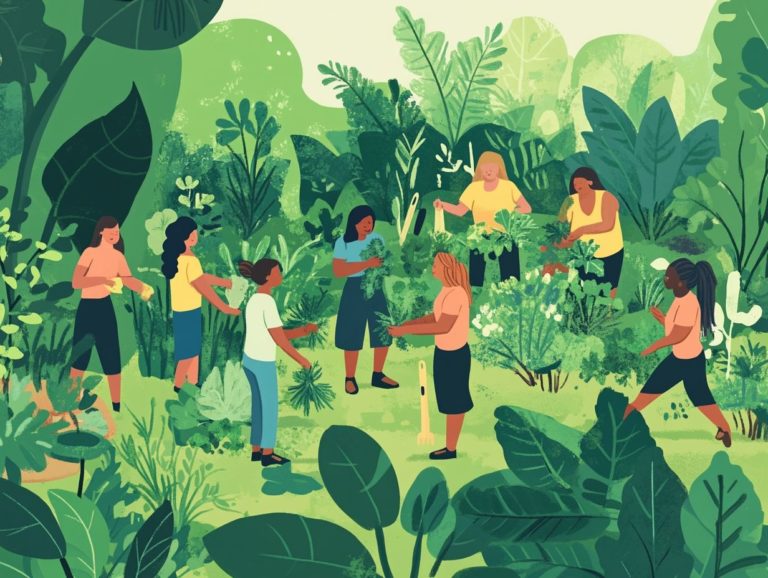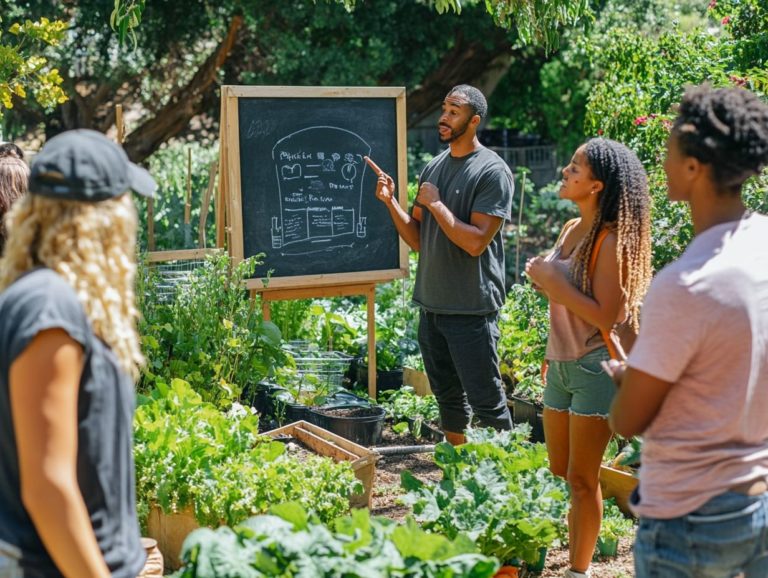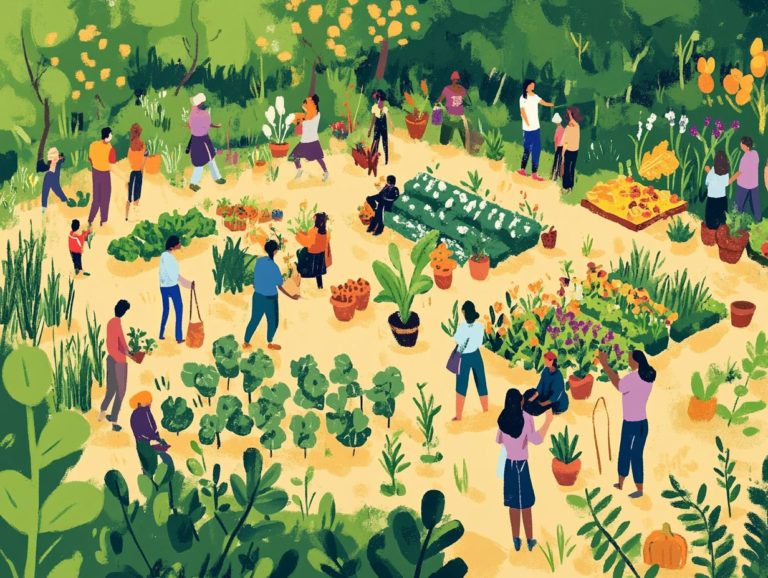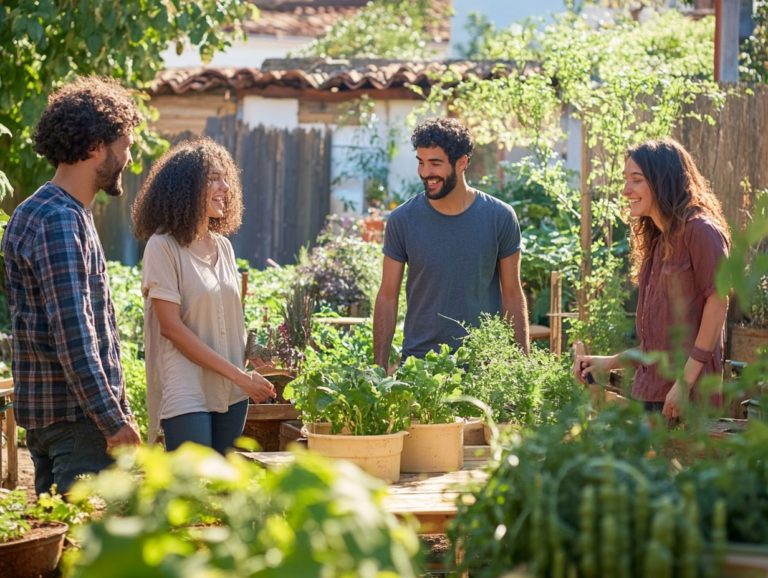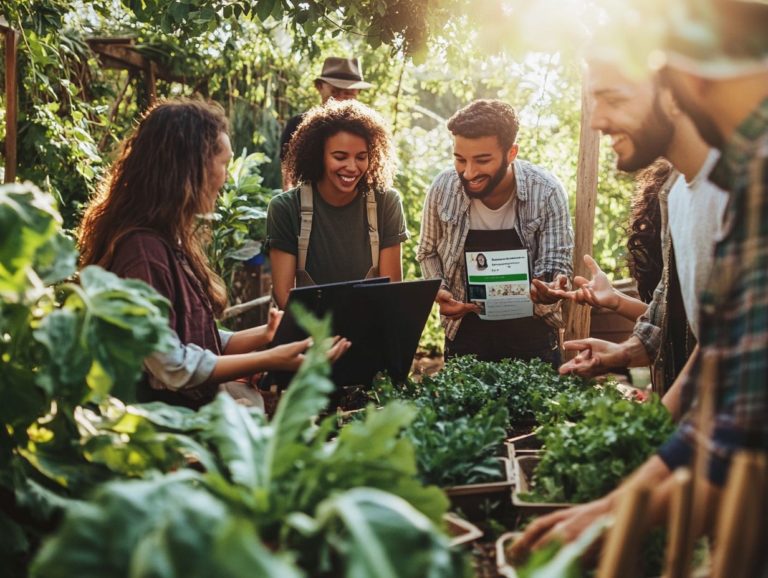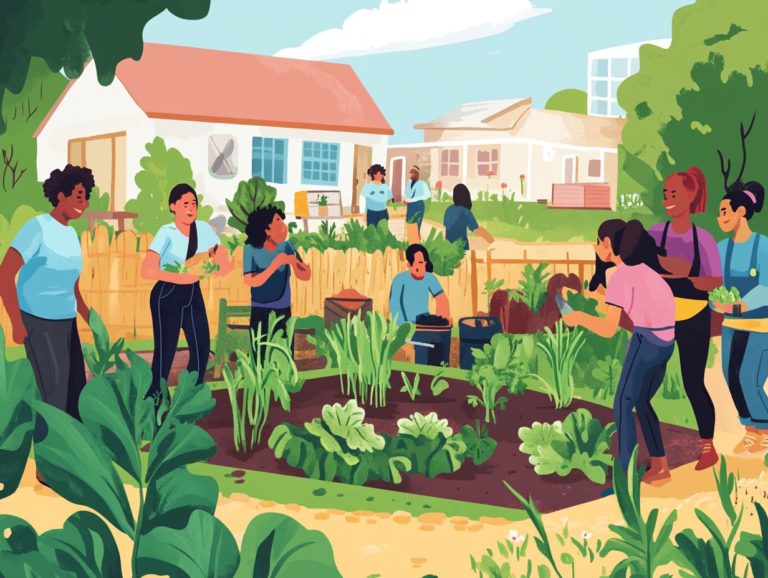56. Collaborative Gardening: Benefits and Tips
Get ready to explore the transformative world of collaborative gardening! This powerful practice serves as a catalyst for community connection, turning neighborhoods into lush, vibrant green spaces.
This article showcases the heart of collaborative gardening and its myriad environmental and social benefits. You ll learn how to initiate your own community garden, from identifying the right group to meticulously setting up the space.
Uncover essential strategies for fostering effective communication and sharing responsibilities among participants. Whether you re a seasoned gardener or a curious newcomer, there s valuable insight here for everyone to enjoy!
Contents
- Key Takeaways:
- What is Collaborative Gardening?
- Benefits of Collaborative Gardening
- How to Get Started with Collaborative Gardening
- Tips for Successful Collaborative Gardening
- Frequently Asked Questions
- What is collaborative gardening?
- What are the benefits of collaborative gardening?
- How can I find people to collaborate with on a garden?
- What are some tips for successful collaborative gardening?
- Do all members of a collaborative gardening group need to have the same level of gardening experience?
- Can collaborative gardening be done virtually?
Key Takeaways:
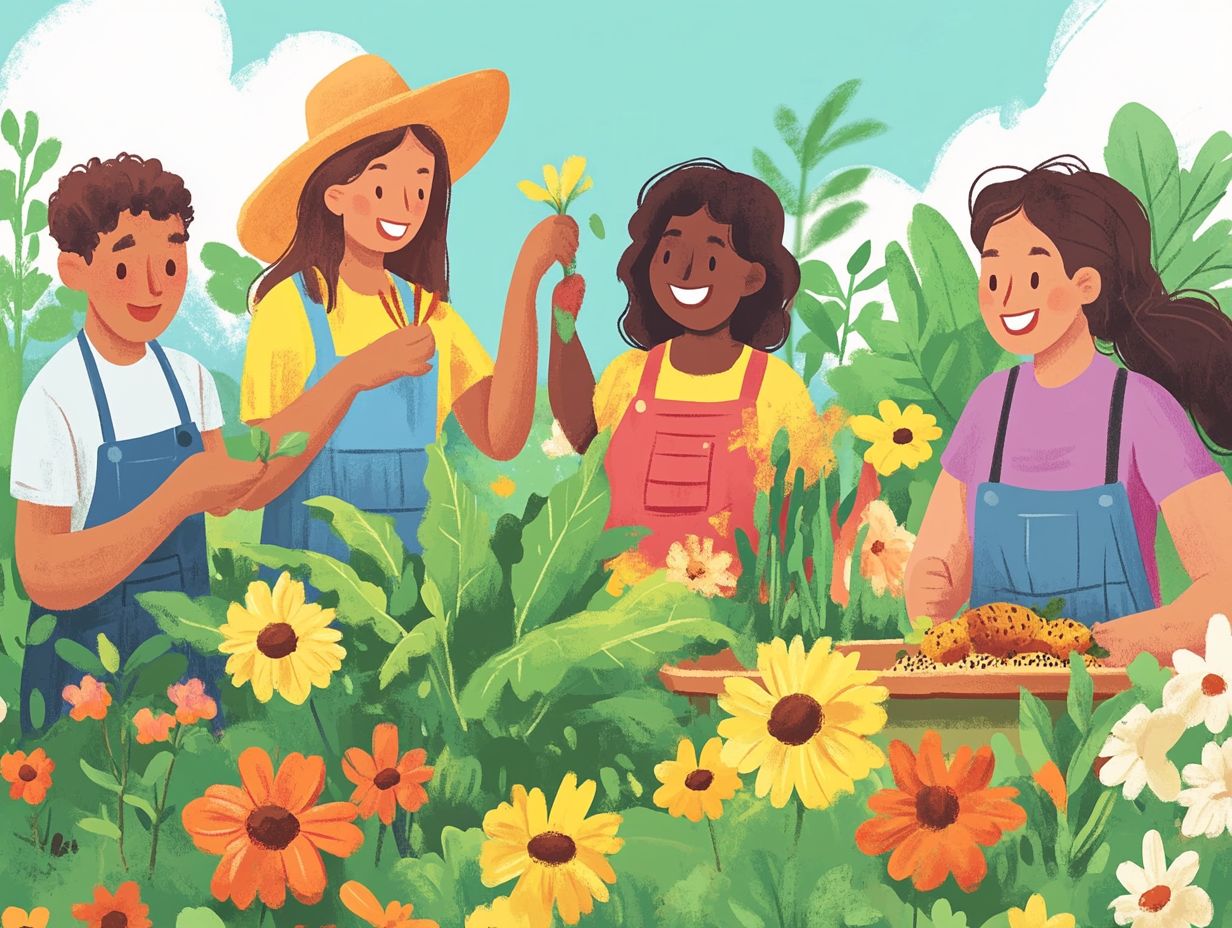
- Collaborative gardening is a sustainable and community-building activity that involves sharing resources and responsibilities with others.
- The benefits of collaborative gardening extend beyond the environment and include social benefits such as building relationships and promoting a sense of community.
- Successful collaborative gardening requires effective communication, planning, and a willingness to share responsibilities and resources with fellow gardeners.
What is Collaborative Gardening?
Collaborative gardening, often referred to as community gardening, involves individuals and families from diverse backgrounds uniting to engage in gardening activities within designated city gardening spaces known as community plots.
This practice promotes environmental awareness and education, cultivating a therapeutic environment where both adults and children can nurture plants and build meaningful relationships within their community.
In vibrant locales like Singapore, these gardens enhance community development, resilience, and social cohesion, enriching the lives of all involved.
Defining the Concept
The concept of collaborative gardening invites you into a realm of community gardening initiatives that beautifully blend social interaction, environmental education, and enhanced well-being for everyone involved.
These gardens serve as vibrant anchors in urban landscapes, where people unite to cultivate not just plants, but also meaningful relationships and a profound sense of ownership within their communities.
Urban agriculture flourishes in these spaces, offering you the opportunity to learn sustainable practices while tackling food insecurity. For example, community gardens in San Francisco weave native plant cultivation with educational workshops, transforming into learning hubs.
Therapeutic gardens crafted for mental health treatment provide tranquil environments, complete with sensory plants that engage your senses, promoting healing and mindfulness. These models showcase the multifaceted nature of collaborative gardening, turning vacant lots into dynamic, interactive plots that nurture community connections.
Benefits of Collaborative Gardening
Engaging in collaborative gardening provides a wealth of benefits that reach far beyond merely cultivating plants. This enriching practice enhances health and well-being by encouraging physical activity, nurturing social connections, and elevating nutrition for both adults and children involved. Additionally, it’s important to consider ways to promote biodiversity in community gardens to further enrich the gardening experience.
Environmental and Social Benefits
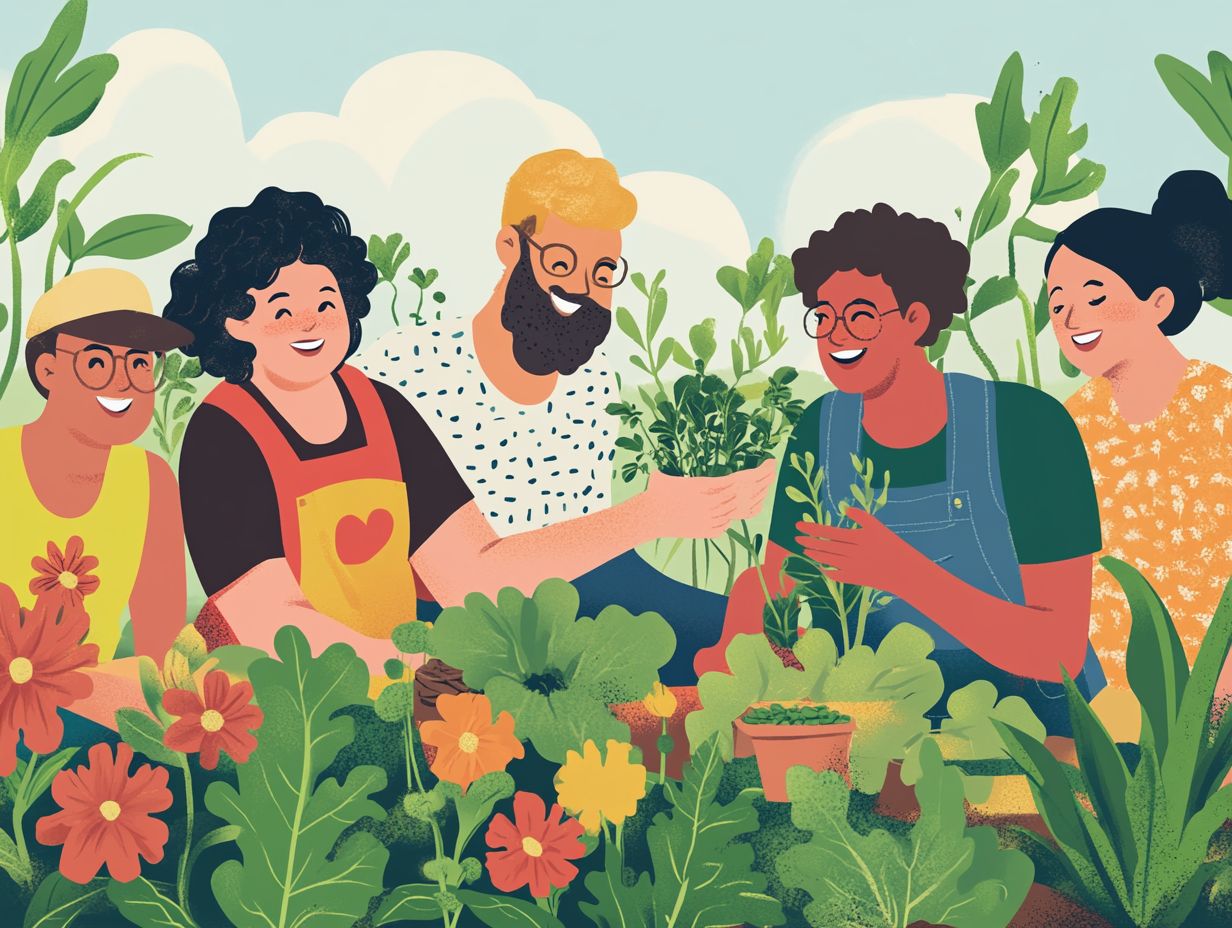
Engaging in collaborative gardening offers you a wealth of environmental and social benefits, enhancing ecological balance while strengthening community ties. To maximize your efforts, consider following the best practices for community gardening.
This collective endeavor nurtures biodiversity by creating habitats for various species and boosts ecosystem health through improved soil quality and water retention.
As you and your neighbors join forces to cultivate shared green spaces, you exchange knowledge and resources, fostering sustainable practices that enrich the environment.
Gardening actively brings people together, deepening relationships and instilling a sense of belonging among all participants. In essence, community gardening becomes a powerful instrument for revitalizing neighborhoods, providing access to fresh produce, and cultivating a resilient, cohesive community spirit.
Start creating your community garden today! Together, we can transform our neighborhoods into greener, more connected spaces.
How to Get Started with Collaborative Gardening
Embarking on your journey into collaborative gardening is thrilling! Discover a group of passionate gardeners just like you who share your love for growing plants. Together, you’ll establish a shared garden space where everyone can contribute and engage in a variety of enriching gardening activities. This journey cultivates not just plants but also friendships and a sense of community.
Finding a Group and Setting Up a Garden
Finding a group to engage in collaborative gardening is essential for cultivating a vibrant community garden that thrives on shared efforts and resources.
Reach out to like-minded individuals through social media platforms. You can tap into existing gardening communities or even form new ones. Websites like Facebook and Instagram are brimming with local gardening groups that offer a treasure trove of information and support.
Don t overlook community boards in local libraries and grocery stores; they are excellent venues for spreading the word about potential gathering opportunities.
Joining established clubs connects you with seasoned gardeners. They can provide invaluable insights into the key steps needed to create a flourishing garden, from soil preparation to selecting the right plants. A blend of both online and offline strategies ensures you reach a broader audience, fostering a collaborative spirit among fellow garden enthusiasts.
Tips for Successful Collaborative Gardening
For successful collaborative gardening, you ll find that effective communication and planning are essential. These tips help everyone get involved.
These key elements ensure that every participant is engaged and that the community plot flourishes. This ultimately leads to enjoyable gardening experiences for everyone involved.
Effective Communication and Planning
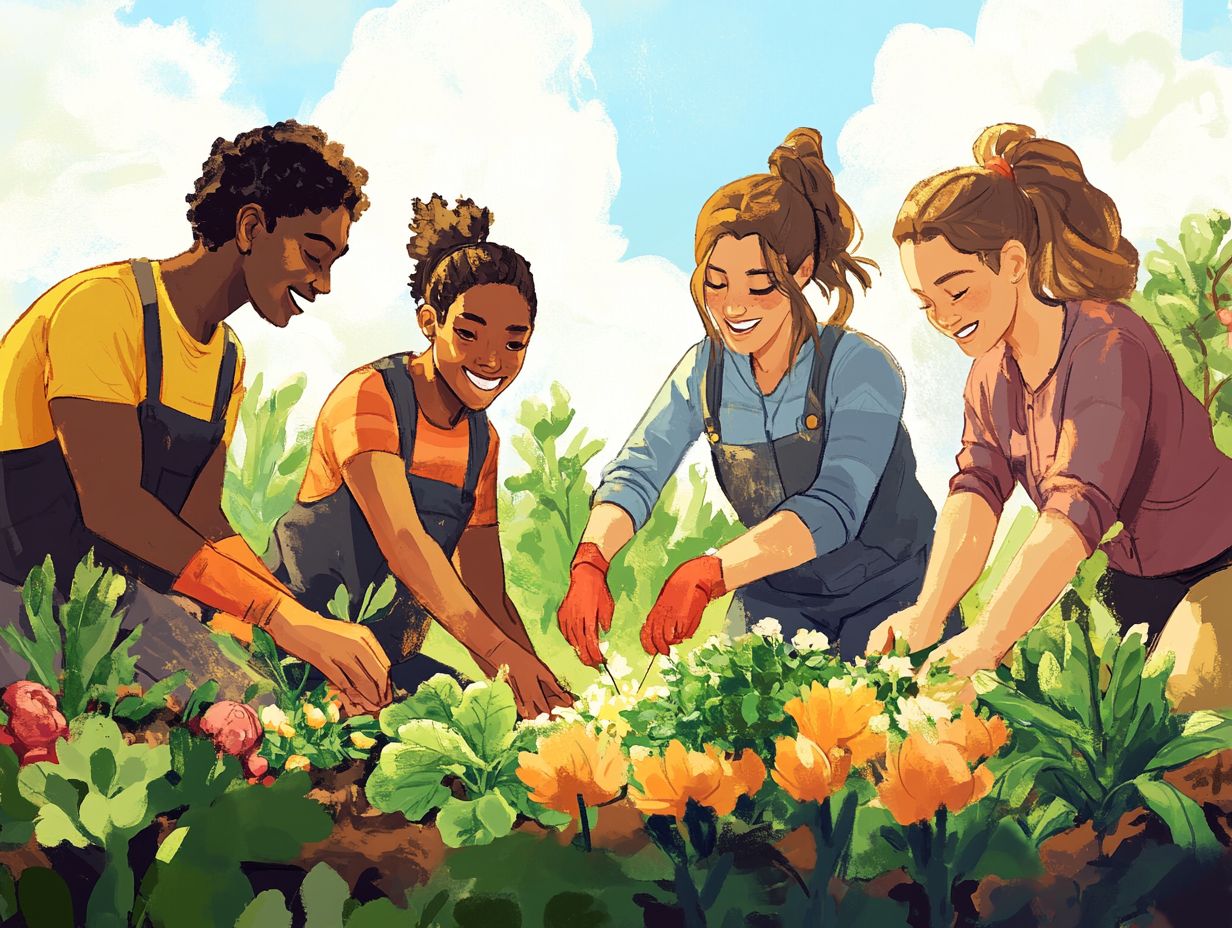
Effective communication in collaborative gardening entails articulating your goals, responsibilities, and expectations with clarity. This can significantly elevate the planning of your gardening activities.
Foster an open dialogue to keep every team member aligned! Regular check-ins can address any concerns or updates related to tasks, such as planting schedules or maintenance routines.
Use tools like shared calendars and collaborative platforms to streamline the process, making it effortless for everyone to coordinate their efforts seamlessly.
Enhancing your gardening sessions can be achieved by setting specific themes or objectives. Focus on particular plants or sustainability practices. This approach encourages participation and fosters commitment from all members involved.
Sharing Responsibilities and Resources
Sharing responsibilities and resources in collaborative gardening ensures that you distribute the workload evenly. It also fosters a sense of community and collective ownership over the garden.
When you and your group come together to handle essential tasks like planting, weeding, and harvesting, you streamline your efforts. This cultivates friendships and shared experiences that enrich your gardening journey. By utilizing tools and seeds collectively, you can save costs and gain access to a broader variety of plants, enhancing the diversity of your garden.
Dividing roles and responsibilities according to individual strengths and preferences allows each member to contribute meaningfully. This leads to more effective gardening practices. This collaborative spirit not only boosts productivity but also deepens the bonds among participants, creating a supportive network that thrives on shared successes and challenges.
Frequently Asked Questions
What is collaborative gardening?
Collaborative gardening is when a group of people come together to work on a garden project, sharing resources, knowledge, and responsibilities.
What are the benefits of collaborative gardening?
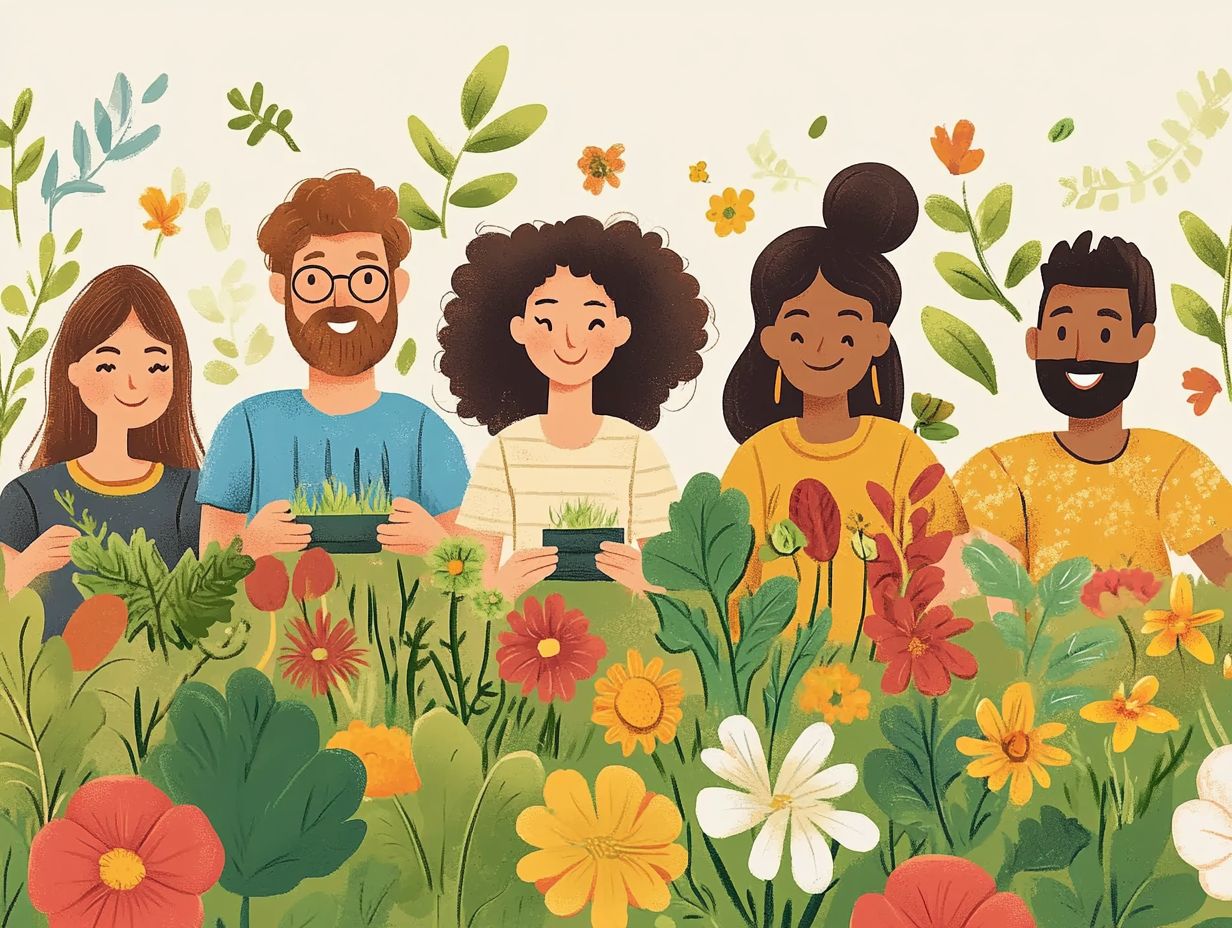
Collaborative gardening allows for a stronger sense of community, shared knowledge and skills, and the opportunity to grow a wider variety of plants.
Ready to dig in and grow together?
How can I find people to collaborate with on a garden?
Reach out to friends, family, or neighbors who love gardening. You can also join a local gardening group or community garden.
What are some tips for successful collaborative gardening?
Good communication and careful planning are essential. Discuss tasks and potential challenges together to avoid conflicts.
Do all members of a collaborative gardening group need to have the same level of gardening experience?
No, collaborative gardening thrives on shared knowledge. People with different experience levels can work together and learn from each other.
Can collaborative gardening be done virtually?
Yes! You can collaborate through online platforms or video calls. This connects people who might be far apart.

